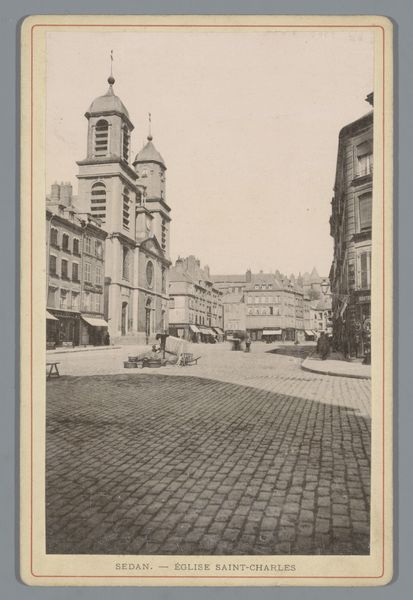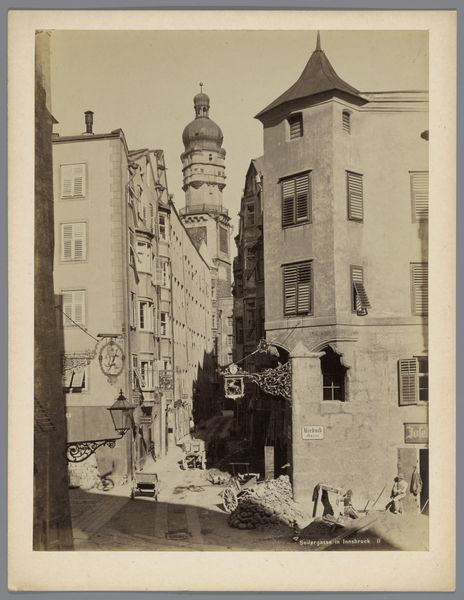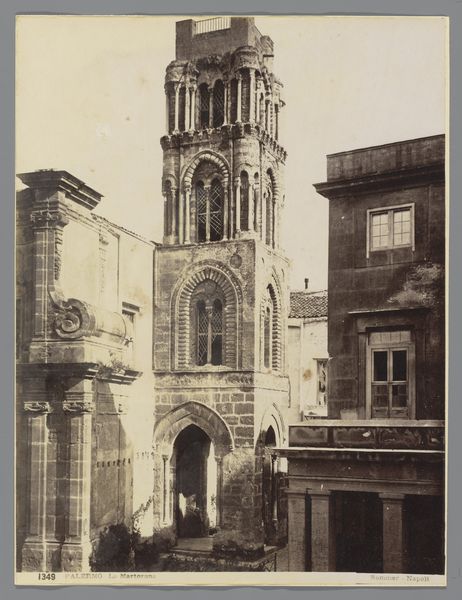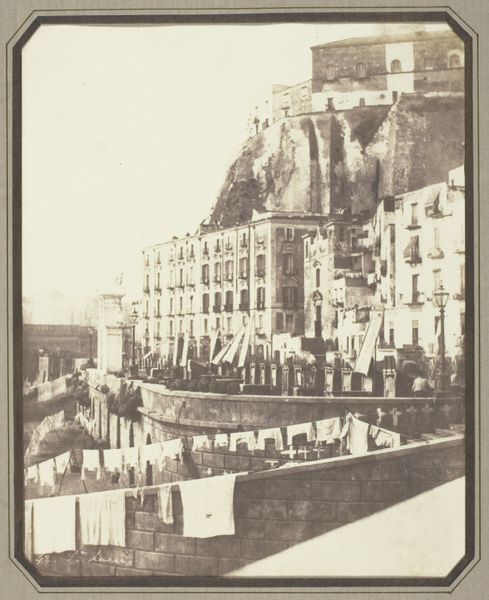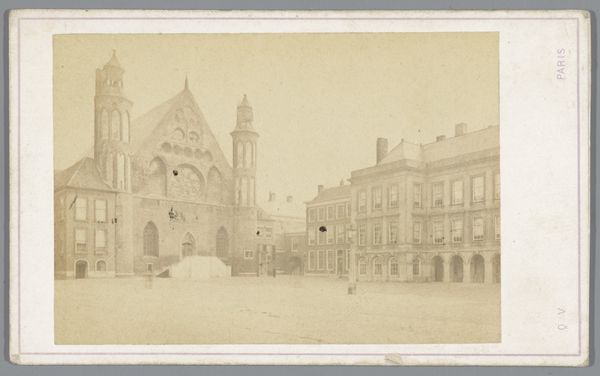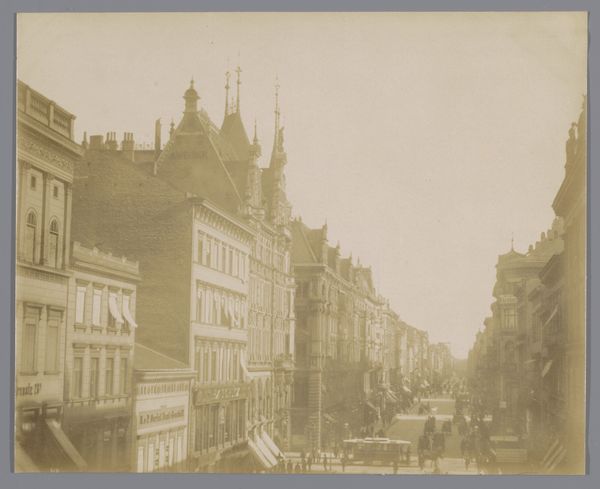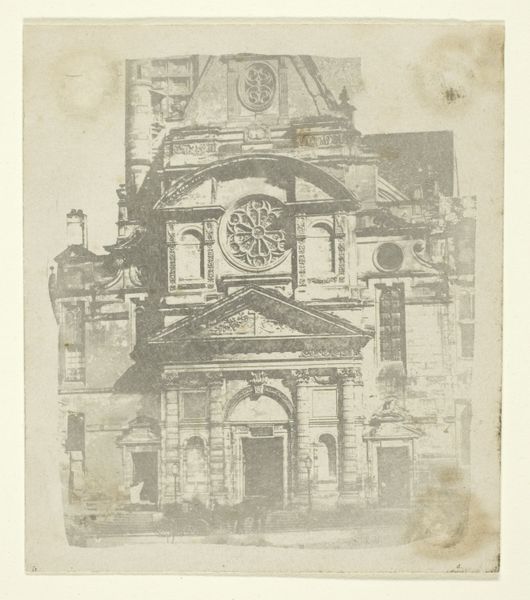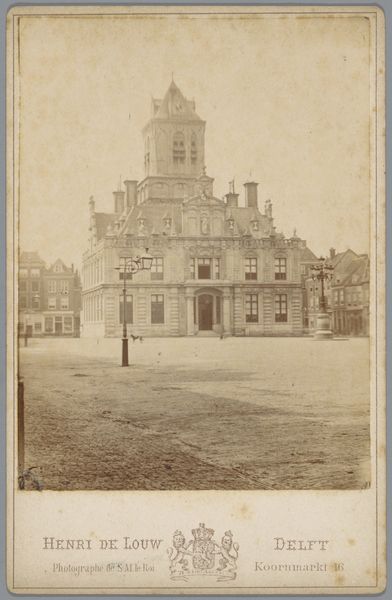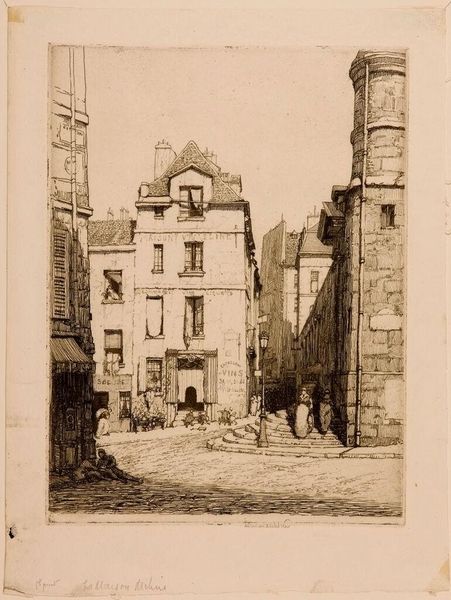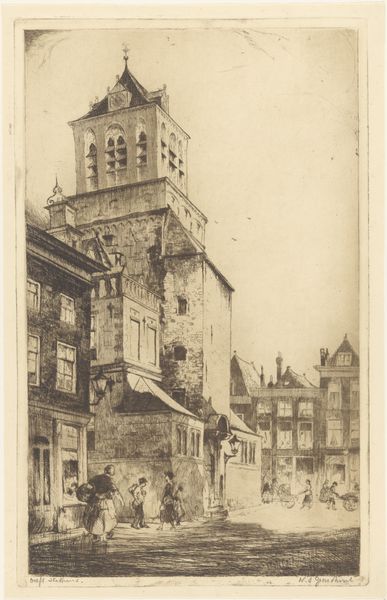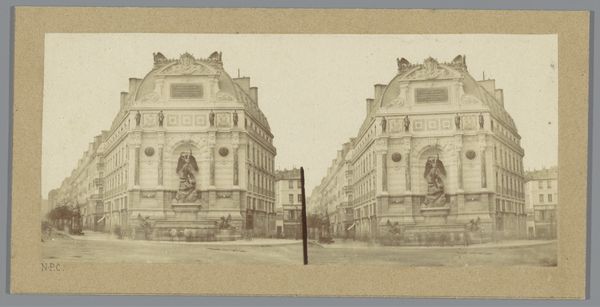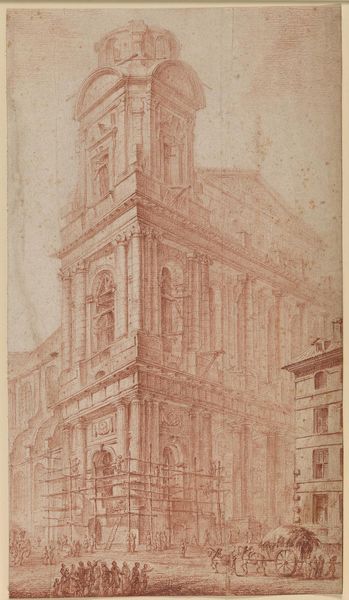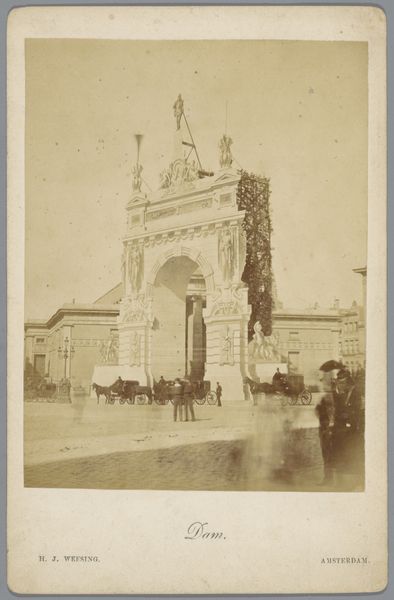
Dimensions: height 178 mm, width 140 mm, height 142 mm, width 107 mm
Copyright: Rijks Museum: Open Domain
This photograph, by Eugène Hanau, shows the wreckage around the Temple du Marais after the Paris Commune. The sepia tones of the albumen print lend a ghostly quality, while the sharp focus captures the destruction in stark detail. The image-making process itself is crucial here. Photography in the 19th century was a complex mix of chemistry and craft. The albumen process involved coating paper with a solution of egg white and silver nitrate, making it sensitive to light. The photographer then carefully exposed the paper to the scene using a large format camera, creating a negative that could be printed. The photograph’s clarity and detail would have been remarkable at the time, and served as a powerful form of documentation. Photography democratized image-making and journalism, offering a new way to record events and shape public opinion. It's important to remember that photography, like any medium, is shaped by the technologies and social conditions of its time. By understanding these factors, we gain a deeper appreciation of both the artwork and the world it represents.
Comments
No comments
Be the first to comment and join the conversation on the ultimate creative platform.
